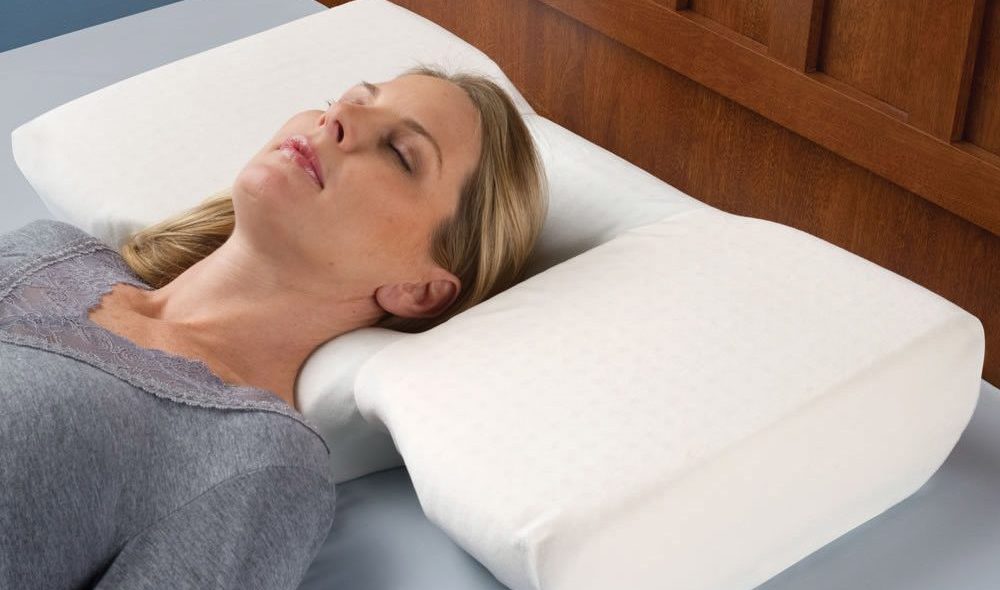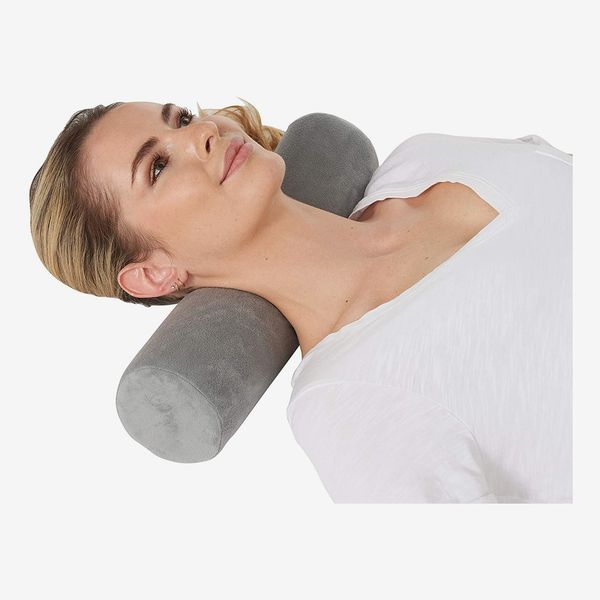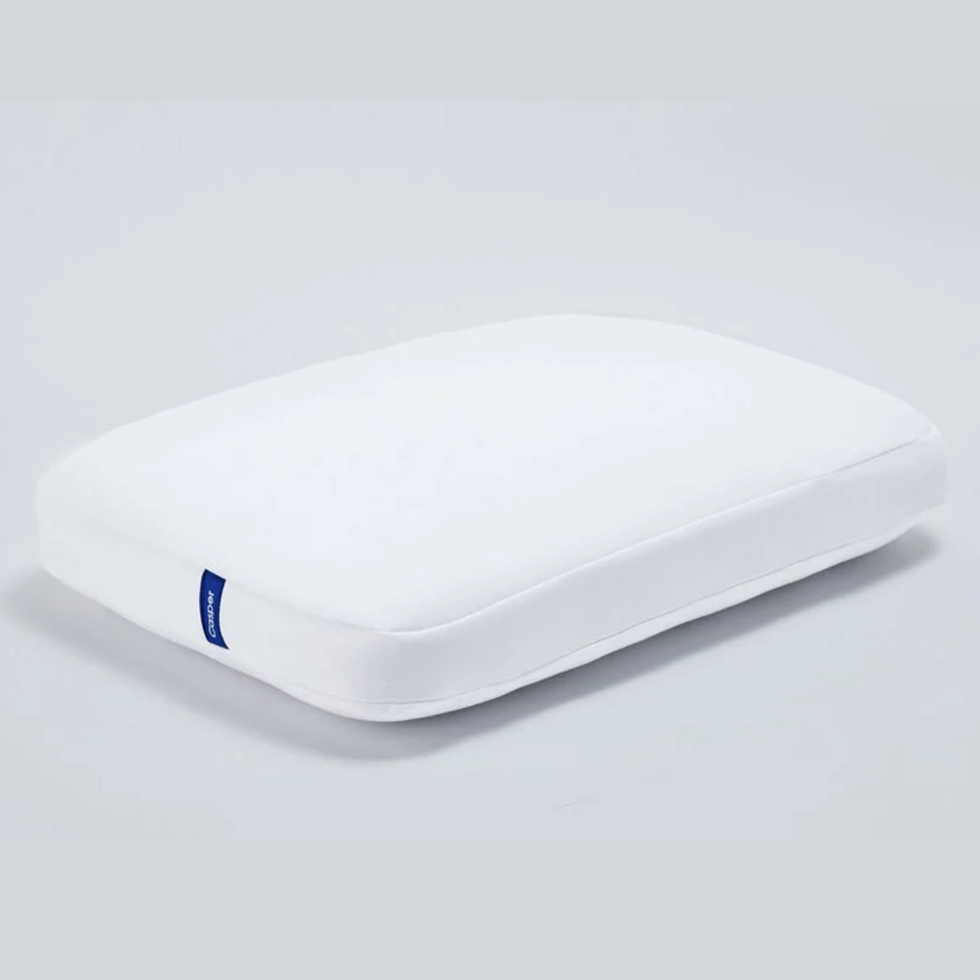Best Type Of Pillow For Neck Pain

Imagine waking up, not to the gentle chirping of birds or the soft glow of dawn, but to a nagging, persistent ache in your neck. A stiffness that makes turning your head a Herculean task. This isn't an isolated incident; it's a recurring morning ritual for millions. And the culprit? Often, it's not a strenuous workout or a sudden movement, but something far more intimate: your pillow.
Choosing the right pillow can be surprisingly complex, especially when dealing with neck pain. The goal isn't just comfort, it's proper spinal alignment, supporting the natural curve of your neck while you sleep. This article will guide you through the world of pillows, exploring various types and materials, helping you discover the best option for a pain-free, restful night.
Understanding the Neck Pain Connection
Neck pain is a common ailment, affecting a significant portion of the adult population. According to the National Institutes of Health (NIH), musculoskeletal neck pain is frequently linked to poor posture, stress, and, crucially, inadequate sleep support. When your head and neck aren't properly supported, the muscles strain to compensate, leading to stiffness, pain, and even headaches.
The ideal sleeping posture keeps your spine aligned. Whether you sleep on your back, side, or stomach, your pillow should fill the space between your head and the mattress, preventing your neck from bending at an unnatural angle. Failure to do so disrupts the delicate balance of your cervical spine, leading to discomfort and potential long-term issues.
Pillow Types: A Comprehensive Overview
The market offers a dizzying array of pillows, each with its own set of features and benefits. Let's explore some of the most popular types.
Memory Foam Pillows
Memory foam pillows are a popular choice for those seeking contouring support. This material conforms to the shape of your head and neck, providing customized cushioning. The density of the foam is a key factor; firmer foams offer more support, while softer foams provide greater pressure relief.
One advantage of memory foam is its ability to distribute weight evenly, reducing pressure points. This can be particularly beneficial for side sleepers who need substantial support to maintain spinal alignment. However, some people find memory foam to be too warm, as it can trap heat.
Latex Pillows
Latex pillows offer a similar conforming effect to memory foam, but with a more responsive and breathable feel. Made from natural or synthetic rubber, latex pillows are known for their durability and hypoallergenic properties. They tend to be bouncier than memory foam, providing a more supportive feel.
Natural latex is a sustainable and eco-friendly option, derived from the sap of rubber trees. This makes it a good choice for environmentally conscious consumers. Latex pillows generally allow for better airflow compared to memory foam, helping to regulate temperature and prevent overheating during the night.
Down and Feather Pillows
Down and feather pillows are prized for their softness and luxurious feel. Filled with the fluffy undercoating of ducks or geese, down pillows offer a lightweight and moldable sleep surface. Feather pillows, on the other hand, contain the outer feathers of these birds, providing more structure and support.
While undeniably comfortable, down and feather pillows may not provide sufficient support for individuals with neck pain. They tend to flatten out over time, losing their loft and compromising spinal alignment. However, some higher-quality down and feather pillows are designed with multiple chambers to maintain their shape and support.
Buckwheat Pillows
Buckwheat pillows are filled with the hulls of buckwheat seeds. These pillows are known for their exceptional support and adjustability. The hulls shift and conform to the shape of your head and neck, providing customized support and promoting proper spinal alignment.
Buckwheat pillows can feel quite firm initially, and they may take some getting used to. They also tend to be heavier than other types of pillows. However, their excellent support and breathability make them a popular choice for those seeking relief from neck pain.
Water Pillows
Water pillows feature a water-filled core surrounded by a layer of fiber. These pillows offer dynamic support that adjusts to your movements throughout the night. The water core provides a stable base, while the fiber layer adds comfort and cushioning.
Water pillows allow you to customize the firmness by adjusting the amount of water in the core. This makes them a versatile option for individuals with varying needs and preferences. They can be particularly effective for alleviating neck pain and improving sleep quality.
Choosing the Right Pillow: Factors to Consider
Selecting the best pillow for neck pain involves considering several factors, including your sleeping position, body size, and personal preferences.
Sleeping Position: The ideal pillow height, or loft, varies depending on your preferred sleeping position. Back sleepers generally require a thinner pillow to maintain proper spinal alignment. Side sleepers need a thicker pillow to fill the space between their head and shoulder. Stomach sleepers often benefit from a very thin or no pillow at all, as using a thick pillow can exacerbate neck pain.
Body Size: Larger individuals may require a thicker pillow to provide adequate support. Smaller individuals may find a thinner pillow more comfortable. It's important to consider your body proportions when choosing a pillow to ensure optimal spinal alignment.
Personal Preferences: Ultimately, the best pillow is the one that feels most comfortable to you. Experiment with different types and materials to find what works best for your individual needs and preferences. Don't be afraid to try out different pillows until you find the perfect fit.
Beyond the Pillow: Additional Tips for Neck Pain Relief
While choosing the right pillow is crucial, it's just one piece of the puzzle when it comes to managing neck pain.
Maintain Good Posture: Proper posture is essential for preventing neck pain. Be mindful of your posture throughout the day, especially when sitting at a desk or using electronic devices. Take breaks to stretch and move around to avoid stiffness and strain.
Strengthen Neck Muscles: Regular exercise can help strengthen the muscles in your neck and shoulders, providing better support and stability. Simple exercises like neck rotations and shoulder shrugs can make a big difference.
Consider Professional Help: If your neck pain is severe or persistent, it's important to seek professional help. A physical therapist or chiropractor can assess your condition and recommend appropriate treatment options.
A Restful Conclusion
Finding the best pillow for neck pain is a journey of self-discovery, requiring careful consideration of your individual needs and preferences. There's no one-size-fits-all solution, but by understanding the different types of pillows available and considering factors like sleeping position and body size, you can make an informed decision.
Remember, a good night's sleep is essential for overall health and well-being. Investing in a supportive pillow and practicing good sleep hygiene can significantly improve your quality of life, allowing you to wake up feeling refreshed and pain-free. Don't underestimate the power of a good pillow – it could be the key to unlocking a world of restful nights and pain-free mornings.


:max_bytes(150000):strip_icc()/hlt-pillows-neck-pain-test-helix-glaciotex-cooling-memory-foam-6-4c6da52f3543400c94b01deea0a676b8.jpeg)















